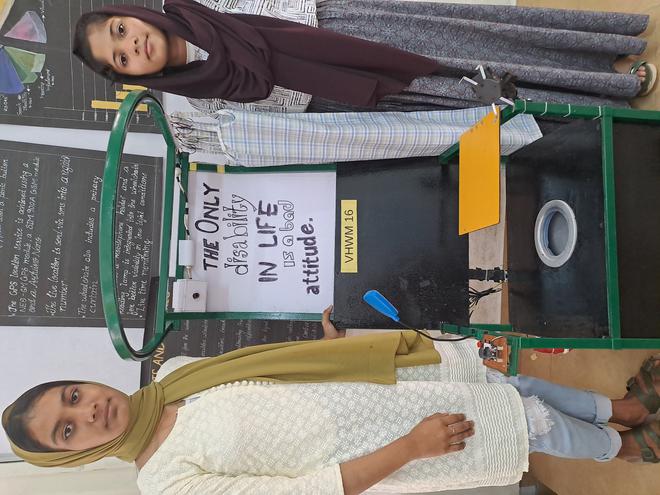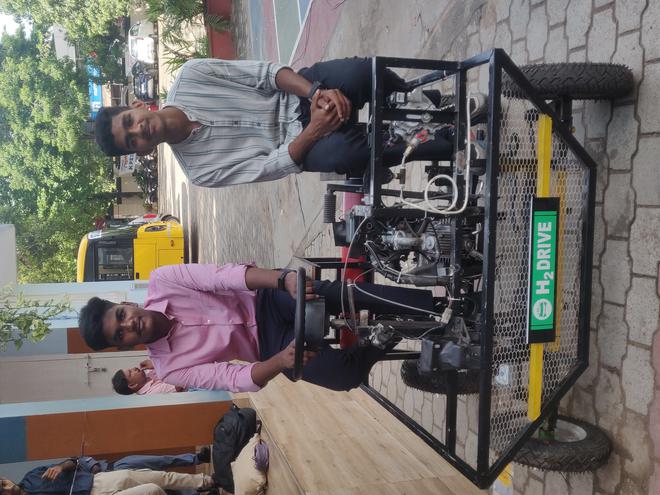Aadithyan P.S. and Nihal Krishna P.B.’s ‘H2Drive’ is big enough to be parked in front a block of St. Joseph’s Higher Secondary School, near General Hospital, on Saturday morning.
The school is the venue of Science Fair as part of the State School Science Festival. In the higher secondary working model competition, Aadithyan and Nihal, Plus Two students of CHSS Chentrappini, have developed the H2Drive in which hydrogen is used as a fuel.
The benefit of using hydrogen is that there is net zero carbon emission, they say. It also has a high calorific value, so is cheaper on the pocket. Higher rpm (revolutions per minute) and torque too can be achieved. This can be used not only in four-wheelers but heavy passenger vehicles and the like.
Though hydrogen is not easily available in the country, the Union government has earmarked 19,744 crore for the National Green Hydrogen Mission in the 2023 Budget, and Kerala would be one of the hubs for this. This would also bring down the cost, they say.

Safety aspects
Hydrogen though is volatile and to ensure safety, the students have installed a leak detection sensor. In the event of a pressure drop, both the fuel and the engine switch off. For crash safety, a collision sensor that releases hydrogen in the cylinder fully into the atmosphere seconds before impact. A petrol vehicle could go up in flames, they say.
If Aadithyan and Nihal’s project rides on the latest developments in science, that by Miha Fathima K. and Nimisha Fathima of MGM HSS, Wayanad, has a social aspect to it. The two girls have come up with a wheelchair bio-toilet facility for differently abled students. Their prototype ‘Divyangan Radh’ will be helpful to such students who are often reluctant to ask for assistance in using the toilet every time. Made with recyclable material, it is operated using a joystick central system. It has a trap door that can be opened with a switch. When the switch is activated, the waste goes to a primary tank where bacterial treatment breaks it down and the waste water is directed to a chlorination tank, making it more hygienic. A final holding tank collects the treated waste, allowing for its easy disposal.

Many facilities
The students have also kept in mind safety aspects. Live visual monitoring is made available, as also a panic button that sends a signal to the registered phone number. GPS sends accurate location through a message. If unable to reach the child, ‘alarm on’ command makes the alarm on the wheelchair ring out, thus bringing help. The wheelchair has also been provided with a privacy curtain, mobile phone holder, and reading lamp.
Mohammed Ali and Mohammed Althaf of Muhimmath HSS, Kasaragod, have showcased emerging technologies such as single-axis solar tracking system that can rotate as per sun’s movement, thus conserving more energy as compared to a fixed solar tracker mount panel. Morocco uses such a technology, they say.
Electric cars that charge while on the move is another component of their project. This is done through emitter coils set into the road and receiver coils under the vehicle. Each time a vehicle passes over a coil, it receives electricity for a fraction of a second.
Competitions for higher secondary school students in working model, still model, improvised experiments, and research-type project were held at the school on Saturday.







